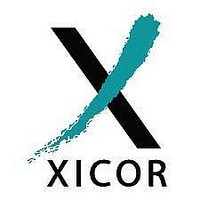X1226 Xicor, X1226 Datasheet - Page 11

X1226
Manufacturer Part Number
X1226
Description
Real Time Clock/Calendar with EEPROM
Manufacturer
Xicor
Datasheet
1.X1226.pdf
(24 pages)
Available stocks
Company
Part Number
Manufacturer
Quantity
Price
Company:
Part Number:
X1226
Manufacturer:
XICOR
Quantity:
5 510
Part Number:
X1226
Manufacturer:
INTERSIL
Quantity:
20 000
Company:
Part Number:
X1226CE
Manufacturer:
NEC
Quantity:
6 219
Part Number:
X1226S8
Manufacturer:
XICOR
Quantity:
20 000
Company:
Part Number:
X1226S8I
Manufacturer:
XICOR
Quantity:
16
Part Number:
X1226S8IZ
Manufacturer:
INTERSIL
Quantity:
20 000
Part Number:
X1226S8IZ-2.7A
Manufacturer:
XICOR
Quantity:
20 000
Part Number:
X1226S8IZT1
Manufacturer:
INTERSIL
Quantity:
20 000
X1226
A write to a protected block of memory is ignored, but
will still receive an acknowledge. At the end of the write
command, the X1226 will not initiate an internal write
cycle, and will continue to ACK commands.
Page Write
The X1226 has a page write operation. It is initiated in
the same manner as the byte write operation; but
instead of terminating the write cycle after the first data
byte is transferred, the master can transmit up to 63
more bytes to the memory array and up to 7 more
bytes to the clock/control registers. (Note: Prior to writ-
ing to the CCR, the master must write a 02h, then 06h
to the status register in two preceding operations to
enable the write operation. See “Writing to the Clock/
Control Registers.”
After the receipt of each byte, the X1226 responds with
an acknowledge, and the address is internally incre-
mented by one. When the counter reaches the end of
the page, it “rolls over” and goes back to the first
address on the same page. This means that the mas-
ter can write 64 bytes to a memory array page or 8
bytes to a CCR section starting at any location on that
page. For example, if the master begins writing at loca-
Figure 9. Page Write Sequence
REV 1.1.24 1/13/03
Signals from
the Master
Signals from
the Slave
SDA Bus
S
a
t
r
t
1
Address
Slave
1
1
1
0
A
C
K
0 0 0 0 0 0 0
Address 1
Word
www.xicor.com
C
A
K
tion 60 of the memory and loads 30 bytes, then the first
23 bytes are written to addresses 40 through 63, and
the last 7 bytes are written to columns 0 through 6.
Afterwards, the address counter would point to location
7 on the page that was just written. If the master sup-
plies more than the maximum bytes in a page, then the
previously loaded data is over written by the new data,
one byte at a time. Refer to Figure 8.
The master terminates the Data Byte loading by issu-
ing a stop condition, which causes the X1226 to begin
the nonvolatile write cycle. As with the byte write oper-
ation, all inputs are disabled until completion of the
internal write cycle. Refer to Figure 9 for the address,
acknowledge, and data transfer sequence.
Stops and Write Modes
Stop conditions that terminate write operations must
be sent by the master after sending at least 1 full data
byte and it’s associated ACK signal. If a stop is issued
in the middle of a data byte, or before 1 full data byte +
ACK is sent, then the X1226 resets itself without per-
forming the write. The contents of the array are not
affected.
Address 0
Word
A
C
K
Characteristics subject to change without notice.
1 ≤ n ≤ 64 for EEPROM array
1 ≤ n ≤ 8 for CCR
Data
(1)
Data
(n)
A
C
K
S
o
p
t
11 of 24












